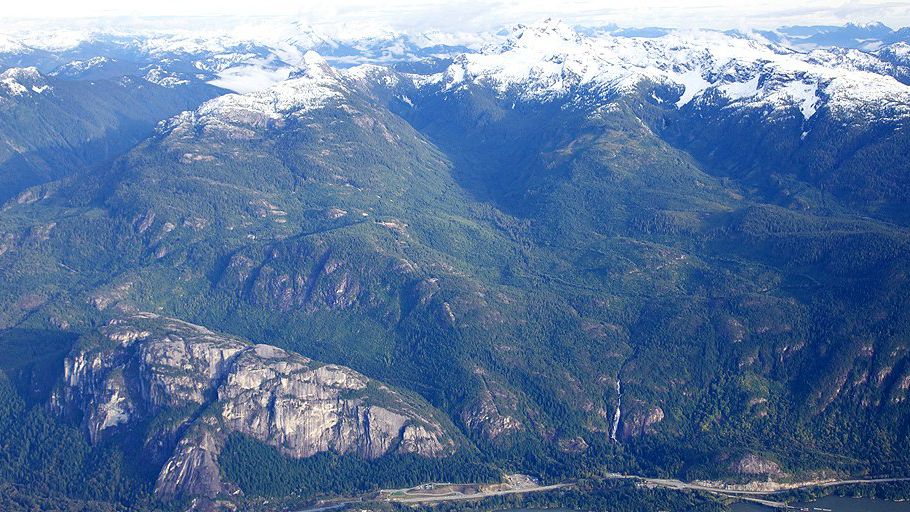
Has Squamish Finally Arrived?
02 December, 2013
Well, things are changing with the increased community of entrepreneurs, young families, world renowned athletes and influencers that are stetting down in town. They are doing so not only for the cost of living but for; the small community feel the lifestyle, the business opportunities, the proximity to the big city and the exceptional natural playground at their doorstep.
Tourism Squamish has done a great job educating people about the attributes and diversity of experiences available supported by the “outdoor recreation Capital of Canada” branding. Despite their efforts, misunderstandings about the place still exist. Others are helping to spread the word and certainly the developers and management of the most important development and tourist attraction in the region and BC at large, the Sea to Sky Gondola.
The Sea to Sky Gondola, opening in May 2014 it is the perfect symbol of Squamish and its rapidly emerging future. $22 million in investment in facility and amenities that will provide access for 100’s of thousands of guests and locals each year to a mountain playground overlooking the spectacular fjord of Howe Sound fjord, layered between the dramatic cliffs of the Chief and the glorious Shannon Falls. “It will provide access to a playground unlike any other. Many are expecting this to be the transformational statement to the outside world that Squamish is so much more than its past”, said Jayson Faulkner, project GM.
There are very few places in the world that have the extraordinary combination of gifts that Squamish and the Sea to Sky corridor have. Ocean to 9000ft mountain peaks in less than 20 kilometers. Great rivers and glaciers, rain forests with 1800 year old trees, warm lakes, and ocean, recreation perhaps unmatched in its variety and quality anywhere in the world. The Howe Sound, in the words of a biologist from the Vancouver Aquarium, “has transformed incredibly quickly”. The whales are back, the dolphins are back, the salmon are back, the herring are back and with this recovery to its natural beauty and health, the tourists are now increasing in larger numbers.
It’s time for the world to start figuring it out. Fully 72% of the 9.5 million people who travel the highway each year do so for recreation. Squamish now boasts one of the highest standards of living in the province with income levels 21% higher than the GVRD or the rest of BC. The people who have settled here are educated and young with 49.5% having post –secondary school educations with a median age of 36 years old. All this against a background where home ownership is affordable at 38% less than the GVRD but only a short commute of 45 to 55 minutes along the spectacular Sea to Sky highway to Vancouver. It is perfectly situated halfway between Whistler and Vancouver. You have the best of both because they are each “just up the road”! Award winning Quest University, recently added TEDx talks, Capilano University, the Ocean Front Development Squamish is running towards its future built upon recreation and tourism. Built upon the natural resources that attracted the very first peoples 9000 years ago as the Stawamus people first settled on the mouth of the Stawamus river by the ocean.
Historic background:
Squamish is a place steeped in West Coast history. In this place, perhaps more than any other is a history of our BC experience. Resource extraction from the seemingly infinite riches that existed all over BC, in timber, in minerals, in fish.
But like the rest of BC, those glory resource days are long gone. And many people in Squamish and the Sea to Sky corridor are happy to say “good riddance”. Perhaps the beginning of the end of the transition from resource extraction and processing economies to tourism came when Whistler Mtn first opened in 1965. Undeniably the steady improvements in access with the highway construction, most recently the Sea to Sky highway upgrades before the 2010 Olympics, brought more and more adventure seekers into the goldmine of natural splendor.
For anyone who travelled the highway in the 70’s or 80’s, they would remember the smelly smog and haze that was indigent in Howe Sound as Woodfibre pulp mill belched away. There were multiple lumber mills in the corridor and driving the highway en route you would pass dozens of loaded logging trucks in the space of an hour.
The Britannia mine was the largest copper mine in the commonwealth and when closed in 1974 it has since become a world renowned mining museum. Logging trucks are few and far between now.
And the skies, the waters, and the community’s future, all look very bright indeed.
Written by Elyse Mailhot